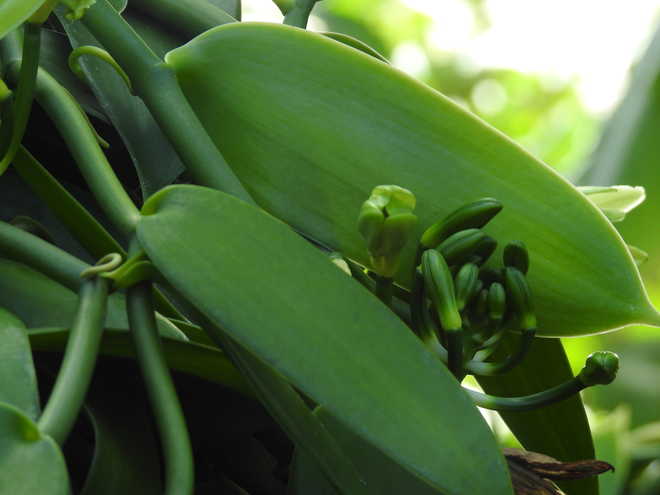Vanilla’s long journey to exoticity
Bindu Gopal Rao
Did you know that vanilla is the second most expensive spice after saffron? It takes years to become usable and that’s why it is so costly. The best place to learn about bourbon vanilla is La Vanilleraie, a traditional workshop located in Sainte Suzanne in Reunion Island, a region of France in Indian Ocean.
Look back and wonder
The vanilla plant has been in use for over 2,000 years and is native to Mexico. Vanilla in Reunion Island dates back to 1819 and was introduced by Captain Philibert and Botanist Perrotet. However, the cultivation did not take off for another 20 years, as the bees that pollinate the vanilla plants in Mexico did not exist in Reunion. It was in 1841, Edmond Albius, a 12-year-old slave, discovered the technique of hand-pollinating vanilla, which ensured its cultivation there. The plant needs a warm-and-humid tropical climate and hence the vanilla plantations are concentrated on the east coast of the Island, which receives heavy rainfall. Also, the vanilla plants grow in the forest as these need shade.
The Pollination process
It takes three years for vanilla flowers to bloom. These must be pollinated in the morning as the flower wilts within a day. Also, one flower gives only one vanilla bean. Workers hand pollinate more than 200 flowers per hour during the flowering period that is typically between September-October to December. “Hand pollination involves cutting the hood that protects the male organs, lifting up the flap that separates it from the female organs and bringing them into contact as delicately as possible. The vanilla bean reaches its final size two months after being pollinated but needs nine months to reach maturity like a baby,” explained Bertrand Co`me, Directeur chez La Vanilleraie. A vanilla pod forms after a vanilla flower is pollinated within 12 hours of opening.
Challenges of Harvesting
To retain flavour, it is important to harvest vanilla beans just before these split. After collection, the beans have to be immersed in hot water at 65°C for three minutes within 48 hours. This method has been developed by Reunionese producers Ernest Loupy in 1851 and perfected by David De Floris in 1857.
The drained, vanilla beans are immediately packed in wooden boxes, lined with blankets, to allow them to sweat for 24 hours. It is then these develop the brown-chocolate colour. The beans are still full of water at this stage and need to be dried twice — a 10-day intense sun-drying and low-shade drying for two to three months. Vanilla pods are regularly sorted out and the dried beans are kept inside maturation boxes for 12 months. The delicate fragrance is developed after a year and then these are graded and bundled and become ready for markets after another year.
No wonder, vanilla is so exotic.
FFAGRANT FACTS
- Vanilla is a member of the orchid family and the only edible fruit-bearing variant.
- There are 110 types of vanilla, only 15 have flavour and only three can be used — vanilla planifolia, vanilla tahitiensis, and vanilla pompona.
- Vanilla needs a combination of rain, sunshine and shade to grow and hence is cultivated in controlled environment.
- It takes roughly two years from harvest to when it is sold on Reunion Island, making it one of the top quality producers in the world.










